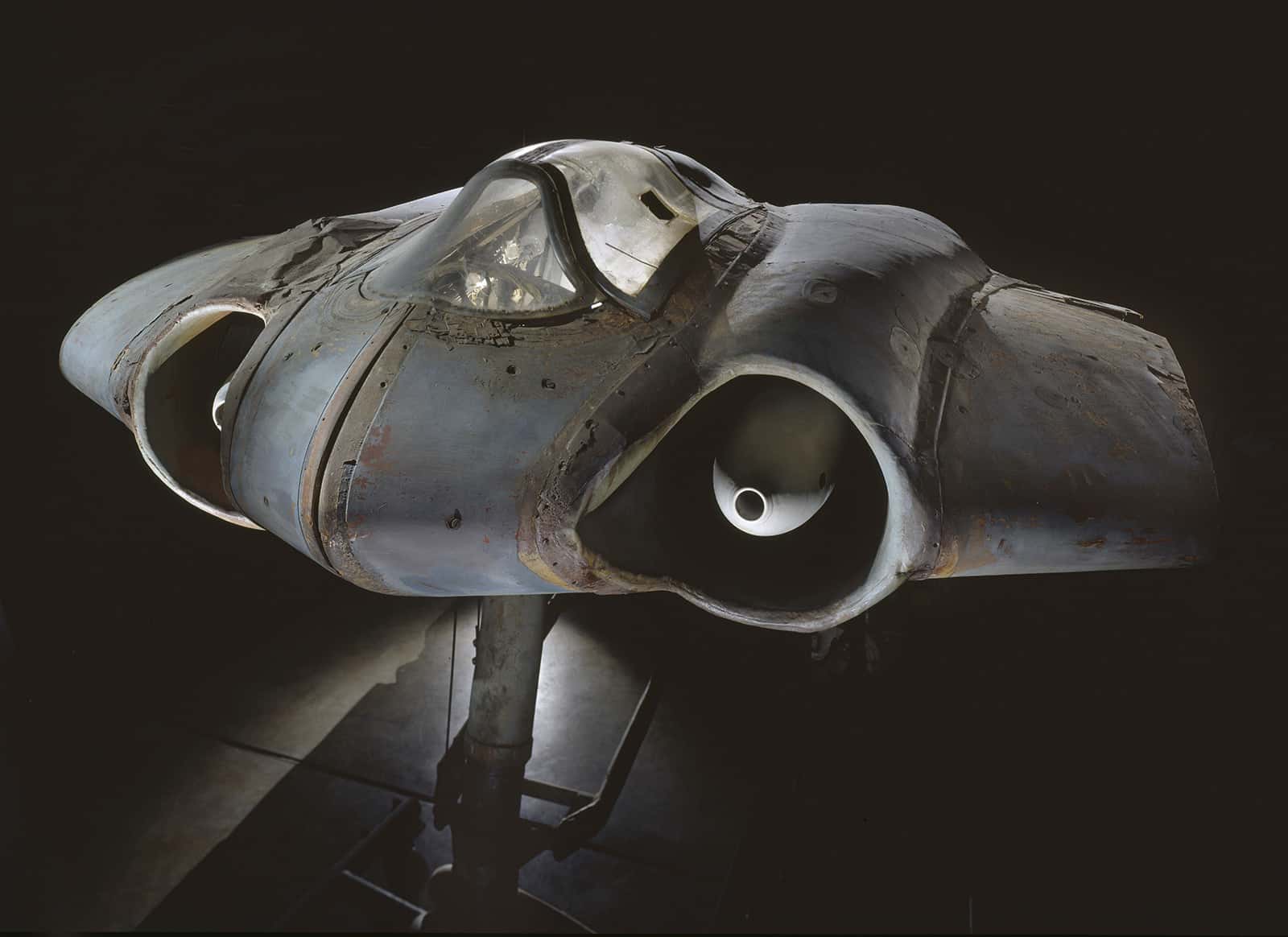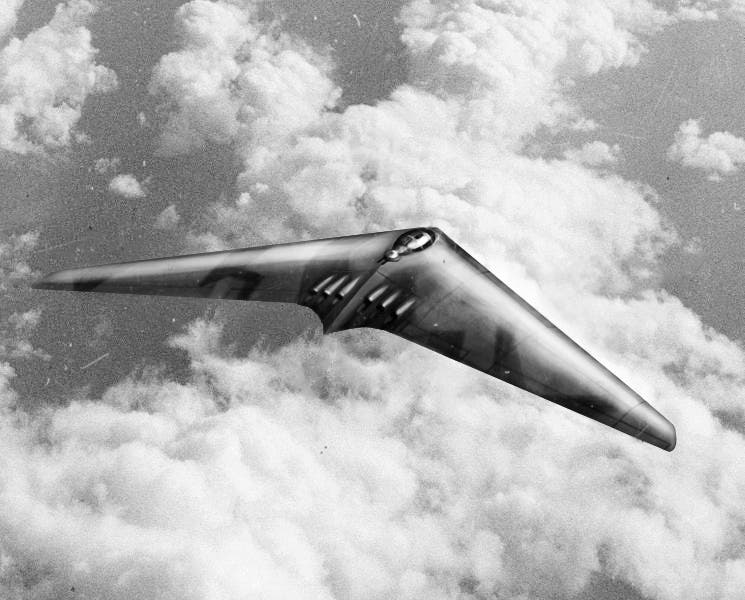
In the summer of 1940, Hitler’s Third Reich seemed unstoppable. Earlier, it had seized half of Poland with minimal casualties and steamrolled over Luxemburg, Belgium, the Netherlands, and even France in just six weeks. Only one nation stood in the way of Germany’s imperialistic drive for the total domination of Western Europe: Britain.
But before the Nazis could subdue Britain and launch an invasion across the English Channel, it was paramount that they destroyed the British defenses on its southern and eastern coasts. This was a task for the mighty German air force (Luftwaffe), and by the end of June 1940, German bombers and fighters were whizzing across Britain, attacking the coast and ships.
Although outnumbered at the start of the campaign by four to one, the RAF came out victorious and the Battle of Britain was won by the end of 1940. In the aftermath, Luftwaffe was left humiliated, but the resourceful Nazis weren’t ready to give up.
To counter the Allies, Germany would ramp up the production of next-generation weapon systems with which they hoped to turn the tide of war in their favor. Among these experiments was a new type of aircraft that was so revolutionary and decades ahead of its time that it would forever change the aerospace industry.
This fabled aircraft was the Horten Ho 229, a stealth jet fighter that seems more at home causing mayhem during the Gulf War, not WWII.

Britain won the Battle of Britain thanks to the Dowding System, which was perhaps the most advanced air defense system in the world during that time. This brilliant defense system brought together radar technology, ground observation crews, and fighter aircraft to create a unified system of defense around British shores. But the key element was radar, which detected and tracked enemy aircraft, a bit of technology that was ironically invented by the Germans.
In response to the challenge posed by radar, the Luftwaffe ordered its best engineers to design a new high-speed bomber that could evade Allied radar. Hermann Goering, the Luftwaffe chief, issued the so-called 3×1000 requirement, meaning he wanted a plane that could fly one thousand kilometers an hour carrying one thousand kilograms of bombs and have enough fuel to travel one thousand kilometers back to base.
The Horten brothers, Reimar and Walter, rose to the challenge and developed the Ho 229 V3, a revolutionary aircraft that looked and operated like nothing that came before it. Walter was particularly aware of the kind of job that needed to be done as he had already served as a Luftwaffe fighter pilot during the Battle of Britain, a time during which he became painfully aware of the German air force’s shortcomings.
To meet Goering’s demands, the two talented aircraft designers, who were already making their aircraft from a very young age, had to think completely outside the box. The high-speed requirement meant that they had to ditch turbo propeller engines in favor of a new turbojet engine. But as those of you who have engineering experience might know very well, solving a particular problem can introduce new problems in other areas.
In this case, jet engines burn through fuel very quickly — especially the early designs from WWII — so it seemed like it was physically impossible to have an aircraft that could fly extremely fast but also have a lot of range at the same time. Speed or range. You can pick one but can’t have both. Or can you?
 The Horten brothers: Walter (left) and Reimar (right). Credit: Wikimedia Commons.
The Horten brothers: Walter (left) and Reimar (right). Credit: Wikimedia Commons.This is where the Horten brothers’ key innovation came in. Their solution was to completely revamp the design of the WWII warplane, opting for a tailless plane, or a so-called “flying wing” aircraft. Unlike traditional aircraft, which have a distinct fuselage and tail, flying wing planes have no fuselage, with the wing itself serving as the main structure of the plane.
A flying wing airframe offers several advantages, such as a larger internal volume for carrying payloads, but by far the most important benefit is its highly aerodynamic shape that generates almost no drag at all. Since it meets much less air resistance than traditional aircraft, the airframe can attain much higher speeds while consuming less fuel.
The Horten brothers did not invent the flying wing design, nor was it a completely new idea. Northrop, for instance, developed its prototype for a flying wing bomber during World War II, an ambitious project known as YB-35, which was supposed to be able to bomb Nazi-occupied Europe from North America if Britain fell. However, the Hortens seemed more determined than the Americans to pursue such a design, even though neither model reached mass production.
By far though, the most intriguing part of the flying wing design is its stealth profile. Because it has no tail fins that bounce back radar waves more easily, the Ho 229 was challenging to spot by radar. Don’t imagine it was some F-35 though. The Ho229 still showed up on the radar but with a much fainter signal.
A 2008 reconstruction of the Ho 229 airframe by Northrop Grumman and National Geographic found the Nazi jet would have been detected at a distance 80% that of the standard Luftwaffe Messerschmitt Bf 109 fighter. However, combined with its tremendous speed, this modest stealth would have made all the difference, leaving defenders without enough time to react.
That all sounds great and dandy on paper, but the engineering reality of it all proved an entirely different matter. There’s a reason after all why these kinds of planes weren’t filling the sky, and that mainly has to do with the poor stability of a flying wing. These airframes tend to “yaw” side to side and can become completely uncontrollable when the engine is turned off.
Despite these important shortcomings, the Horten brothers were given the green light to start work on their ambitious concept in August 1943. To address the instability issues, the German designers made the wing longer and as thin as possible to spread the mass of the aircraft over a greater surface area while also decreasing the amount of air that generates drag through vortices.
The final bell-shaped wing proved to be ingenious, canceling the yawing issues that a tailless aircraft naturally suffers from. The same shape is found in nature, employed by birds that were never equipped by evolution with an upright tail.

The first three Ho 229 prototypes were unpowered gliders meant to test their aerodynamic design. Following successful tests of the last glider in March 1944, the German engineers mounted two Jumo 004B turbojet engines on the subsequent V2 prototype, each nestled inside either side of the cockpit. The V2 also featured an early ejection seat system and a drogue parachute deployed during landing to offset the jet’s high speed.
On February 2, 1945, the Ho 229 V2 had its maiden flight, which by all accounts proved a huge success. The bat-shaped jet was capable of reaching 975 kilometers per hour and exhibited smooth handling and good stall resistance. The V2 even managed to beat a Me 262 jet fighter (this was the first operational jet in the world) that had the same Jumo 004 engines in a mock dogfight.
But on February 18 disaster struck during another test flight when one of the V2’s engines caught fire and stalled mid-flight. Despite the pilot’s best efforts to turn and dive the aircraft while he attempted to restart the engine, the noxious fumes from the fire caused the pilot to pass out. The prototype subsequently crashed, killing the test pilot.
Despite the tragedy, these tests were heralded as a success, proving that the aircraft could take off, cruise and land. Goering was impressed and approved a fast-tracked production of 40 flying wings under the designation Ho 229 or Go 229. And because the Luftwaffe was so happy with the speed it could attain, the aircraft was repurposed to serve as a fighter armed with 30mm heavy cannons rather than the originally planned role of a bomber. The Horten brothers were also busying themselves with four additional prototypes, numbered V3 through V7, one of which was a two-seat night fighter.
However, the production version never had the chance to fly. The war was going very badly at this point and the Allies were fighting within Germany’s borders themselves. In April 1945, American troops rolled into the factory at Friedrichroda where the Ho 229 was being produced. They found the cockpit sections of prototypes in various stages of development. The most complete of the four, a V3 prototype, was shipped back to the United States to be studied by American engineers, which can be admired on display at the Udvar-Hazy Center of the United States Air and Space Museum in Chantilly, Virginia.

Although no Ho 229 aircraft took off, the technology transfer to the United States gave it a second life through the subsequent stealth bombers developed by Northrop, such as the iconic B-2 at the forefront of the US nuclear deterrent air fleet. The unsuccessful YB-35 was plagued by instability issues due to its propeller-driven engines, but the Hortens showed that jet engines were the way to go for flying wing aircraft.
Other aircraft that have been influenced by the Ho 229 V3 include the Northrop YB-49 and the Northrop Grumman B-21 Raider. These aircraft, like the B-2 Spirit, are flying wing designs that incorporate elements of the Ho 229 V3’s revolutionary design.
The Ho 229 would have certainly been a formidable opponent for the Allied forces, capable of flying at least 33% faster than the best Allied fighters of WWII with some stealth abilities to boot. Luckily for everyone, the Ho 229 production series never flew, nor did its scaled-up version, the Horten H.XVIII. The latter was a proposed Amerikabomber, a six-turbojet engine flying wing capable of dropping four tonnes of bombs onto the continental U.S. flying from Europe.

Overall, the Horten Ho 229 was a fantastic aircraft, decades ahead of its time. Its impact can be felt in many of today’s most advanced modern aircraft, which owe much of their design to the pioneering work of the Horten brothers.
As the war ended, Reimar Horten emigrated to Argentina, where he continued designing and building flying wing gliders, including one experimental supersonic delta-wing aircraft and a four-engined flying wing cargo aircraft, the FMA I.Ae 38 Naranjero, intended to carry oranges from farmers to Buenos Aires. Walter stayed in Germany after the war and became an officer in the post-war German Air Force. Reimar died on his ranch in Argentina in 1994, while Walter died in Germany in 1998.
Tags: luftwaffenazisWorld War II